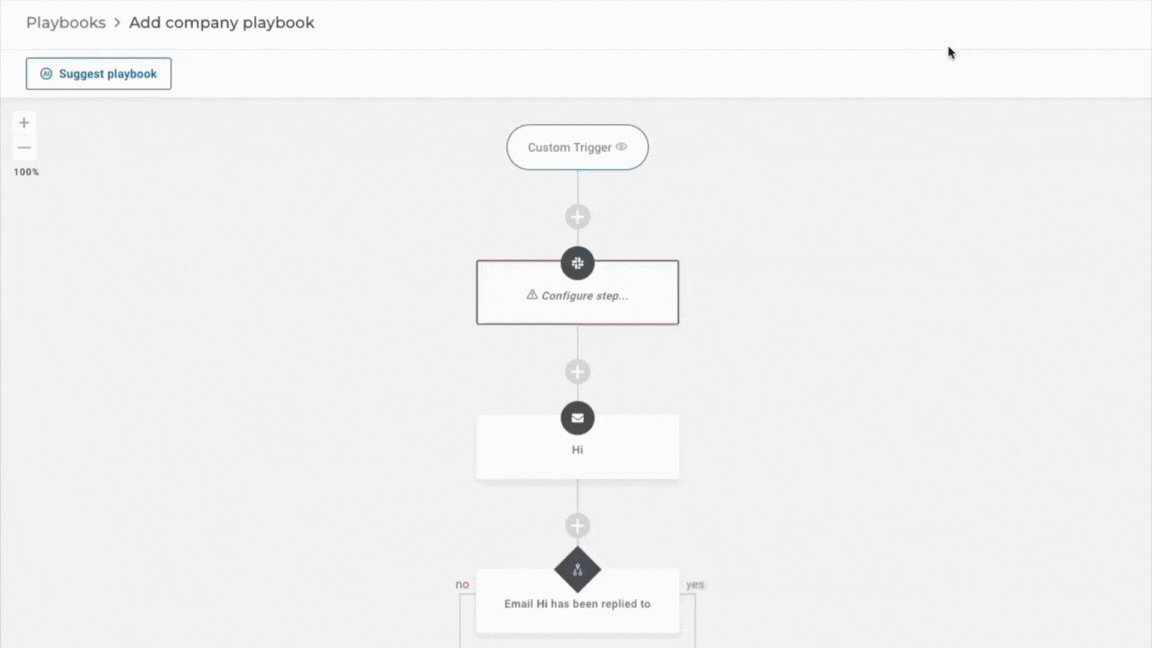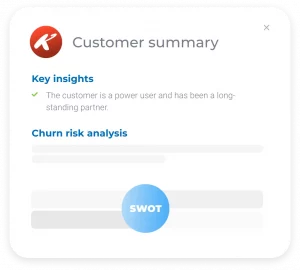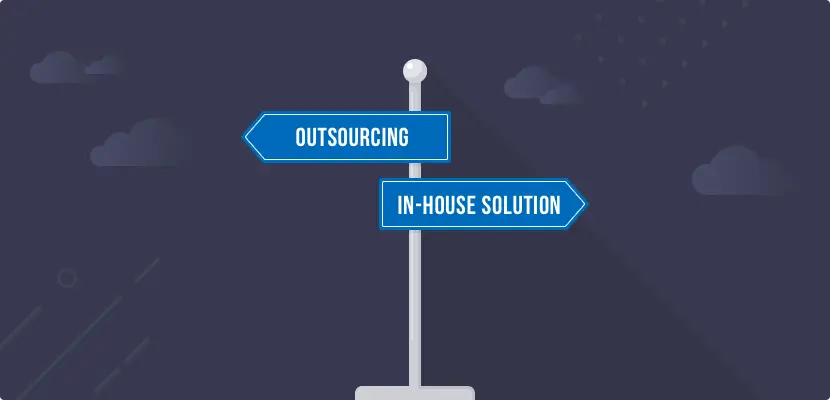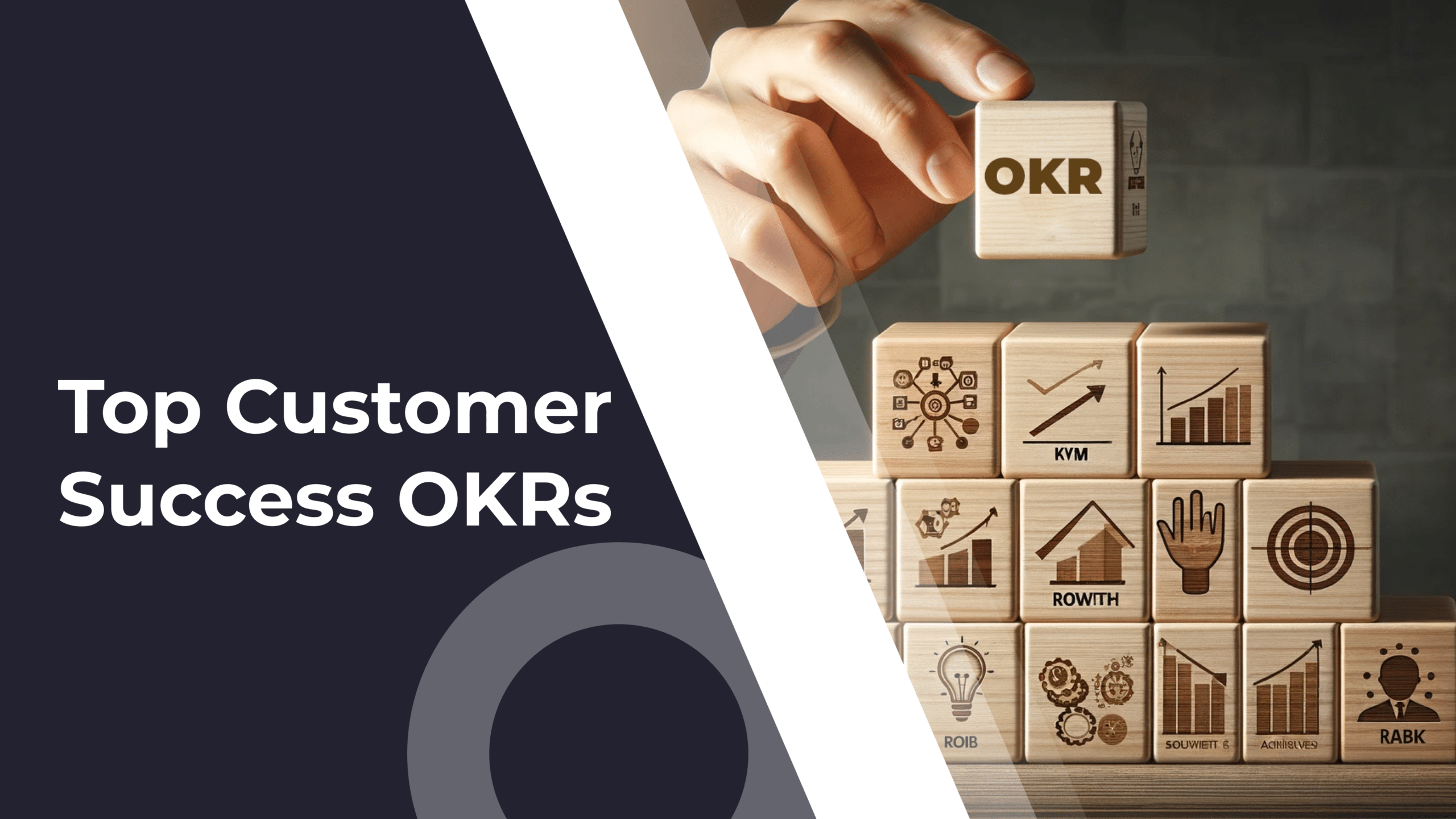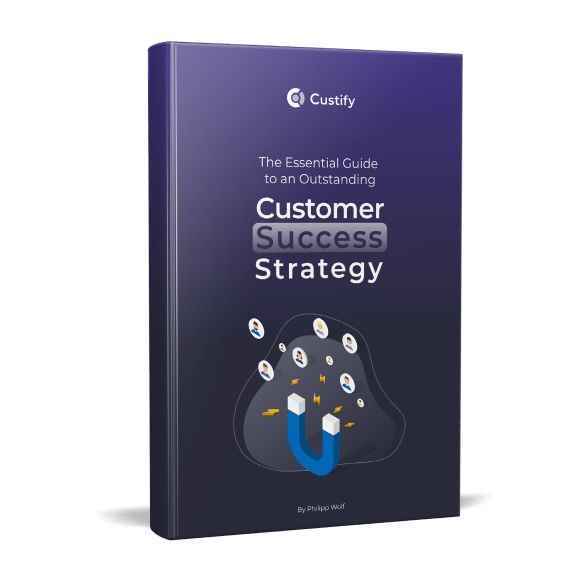Customer success, even from its early beginnings, has positioned itself at the forefront of business tactics.
If we’re to remain there and stay up to date on current trends, making use of AI in customer success is the logical next step.
A while back, I guided you through some powerful tactics for customer retention that use AI. Today, we’ll explore AI tactics for customer success, making note of those that overlap, but mainly focusing on those serving the role of CS in setting the strategy, managing client relationships, and leading customer-centric efforts.
10 Breakthrough Tactics of Using AI in Customer Success
1. Expand the Granularity of Customer Data
The first and most impactful thing AI can help with is analyzing large amounts of data. For a long time in CS, we’ve been collecting more data than we could reasonably analyze. This is where AI comes in – while CSPs have helped condense that into true insights, AI has the potential to scan exponentially more data sets, conducting sentiment analysis, and delivering insights you can use.
You might be thinking that sounds overly complex – not necessarily. Some methods – like the Rows example below – can be simple and quick to use while providing great insights in a flash.
Here are some basic steps for unlocking advanced analytics for your customer success workflow:
- Identify all your data sources. Start by making a list and determining how data from your various tools can be exported. This step will make the rest easier and faster.
- Determine the scope of your AI effort. Disparate efforts will only yield disjointed results. Make a conscious effort to focus on one specific goal, and the steps towards achieving it will become that much clearer.
- Make a list of the stakeholders. Who needs to have access to the resulting insights? Make sure your team has visibility and add all other stakeholders.
- Feed the data into your preferred AI BI tool. Determine which one best suits your needs. Examples include: Rows, AnswerRocket, Team-GPT, Luzmo, and Tableau.
- Generate insights to feed back into your CS workflows. Next, start generating insights and use your CSP to take action based on them.
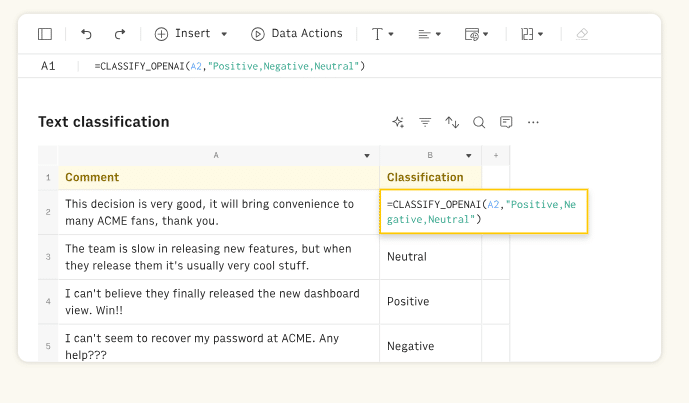
Your AI is only as good as your data map. Clean events, stable identifiers, and feedback loops beat any shiny model—otherwise you’ll just automate guesswork.
– Philipp Wolf, CEO, Custify
2. In-depth Personalized Interaction, at Scale
Armed with new datasets and new insights, apply them to your existing workflow:
- Fine-tune your customer segments and create new cohorts. Newly-unlocked details about your accounts can reshape the way you think of them.
- Optimize timing, duration, and precision. Something I also mentioned in our piece on AI tactics for retention – use your preferred AI to determine the right moment, messaging, and length of interaction for all your customer engagements.
- Create specific playbooks based on new insights. Target new and updated segments with a revamped approach that takes into account new information.
Example:
- You might notice customers for smaller enterprises (series A-B SaaS) prefer more regular check-ins (1-2 per week).
- Despite this, you see they don’t normally respond on Slack (5+ messages never got a reply), but are likely to reply on WhatsApp (4 calls were set up after WhatsApp discussions).
- Using your AI assistant, you determine that short check-in messages at the beginning of the week on WhatsApp are the best approach to drive engagement.
- You also find that customers aren’t always responsive, and account circumstances change often, so you have to stay agile.
- Using your customer success platform, you proceed to set up automatic playbooks that trigger every Monday morning: checking whether it’s ok to engage, sending a message, and then notifying you as it goes out.
3. Generate Automation Flows Quickly and Efficiently
Speaking of automation flows – AI is making it increasingly easy to generate them on the fly. Using powerful customer success tools such as Custify, you can simply write a prompt about what type of automation you want, and the tool will automatically generate all the steps. All that’s left on your end is to simply review each item and make any necessary adjustments.
Example: if you notice a significant portion of your customer base isn’t engaging with your product, you can use AI to generate automation flows that send emails encouraging them to re-engage.
4. Propensity Scoring for Renewal & Expansion (Real-Time)
AI also enables a more advanced way to track renewals and capitalize on expansion opportunities. Simply train a lightweight model on product usage, license utilization, support patterns, C-suite inputs, and billing signals. Then, using this model, produce scores for renewal probability and expansion likelihood per account.
How to implement:
- Pull the last 6–12 months of labeled account statuses (renewed, expanded, churned).
- Engineer simple features first (logins, core-feature depth, time-to-value, seat fill, ticket repeats, NPS trend, dunning events).
- Train an initial version of the model using standard algorithms, such as logistic regression or XGBoost, to establish a performance benchmark.
- Push scores to your CSP and trigger playbooks:
- High-renewal + high-expansion: reach out and attempt upsells / cross-sells.
- Low-renewal: push into proactive engagement flow
- Monitor and update the model quarterly to keep it relevant and prevent drift.
5. In-Depth and Extensive Customer Journey Mapping
With AI taking the business world by storm, multiple micro-revolutions are happening at any given time. One such example comes from the area of experience intelligence. Tools such as TheyDo’s Journey AI, Contentsquare’s Sense, or MyMap now exist to give companies a more holistic view of their customers’ journey.
One thing these tools get right is that they reduce the quantity of cluttered, disparate data points, simmering them down to something digestible. This, I believe, is one of the key competitive advantages AI can give your organization.
The path to competitive advantage isn’t more dashboards or another department-specific project. It’s a unified, living view of the journeys that matter.
– Martin Palamarz, Co-founder & Chief Customer Officer @ TheyDo
Example: here’s an illustration of how journey analytics and experience intelligence tools that use AI can condense your data into actionable points:
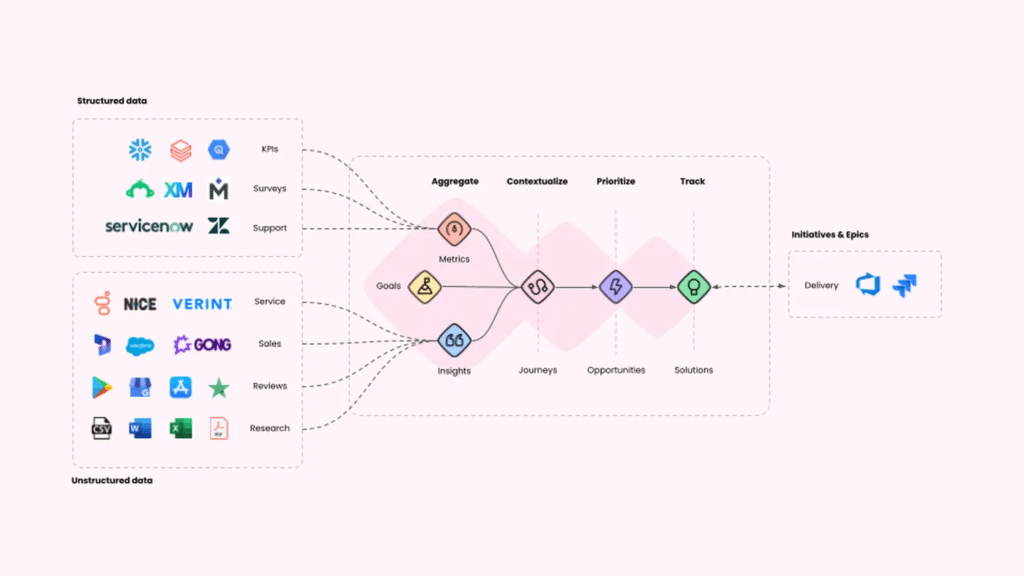
6. Using Custom GPTs as Personal Customer Success Assistants
LLMs such as ChatGPT often give subscribers the option to have more advanced GPTs specific to their needs. One example is the GTM Assistant from OpenAI.
Having a personal AI customer success assistant enables a range of efficiencies beyond what regular LLMs can do:
- Advanced customer research. On a typical workday, I use AI to discuss current customer realities and determine what the ideal next steps are. With a specific customer success GPT, the process is much smoother as the tool already has access to the essentials and can give me short briefs, account overviews, alongside a list of priorities.
- Deeper customer relationships. An LLM ally can help CSMs nurture customer relationships by offering advice on targeted engagement tactics, pointing out hidden facts about specific accounts, or recommending cross-sells or upsells that could increase revenue, along with customer satisfaction and loyalty.
- In-depth product Q&A. Even the best CSMs can have trouble with in-depth product knowledge, particularly if their product is highly complex, requiring advanced technical knowledge. With a custom GPT trained on product data, the CS team can simply ask what they don’t know or the best way to explain something to a customer.
Overall, such a customizable tool will enhance productivity and reduce fact-finding work as well as busywork, allowing us to focus more on strategy and ideation (for which the assistant can also help, acting as a partner to throw ideas at and get real-time feedback and suggestions).
7. Intelligent AI Account Summaries
A simple but effective way to use AI for customer success is through customer summaries. In Custify, we have short AI summaries for each account inside the customer 360 view. Here are some advantages I’ve seen in my day-to-day:
- Great for new hires. New CSMs often need a bit of help to get the ball rolling. Account summaries are great when there’s so much information they need to process quickly.
- Good start to the day. At any given point in CS, we have multiple fires waiting to be put out. So when I begin my day, it’s helpful to see the account summary next to my key customers. That brings me right back into the tasks at hand, ready to continue the work I paused yesterday.
- Great for medium touch accounts. Sometimes accounts don’t need frequent check-ins, but still require you to review their experience and offer assistance on occasion. Account summaries are a great way to see what’s been happening with a customer and step in with the appropriate context.
8. Using AI in Meetings, QBRs, and EBRs
One of the most common professional ways to use AI in a business setting is in meetings. Tools like Fireflies, Krisp, Otter, or even Zoom can help you take notes, remember important information, and converse with the AI engine about what’s been going on in your meetings.
These AI meeting assistants can give CSMs multiple advantages when it comes to customer interactions, acting like:
- A good assistant who remembers key details about customer interactions.
- A smart planner who can help set up your next QBR or EBR.
- A live note-taker that shows you a summary of the meeting after it’s done.
- A conversation partner who knows what happened in the meeting.
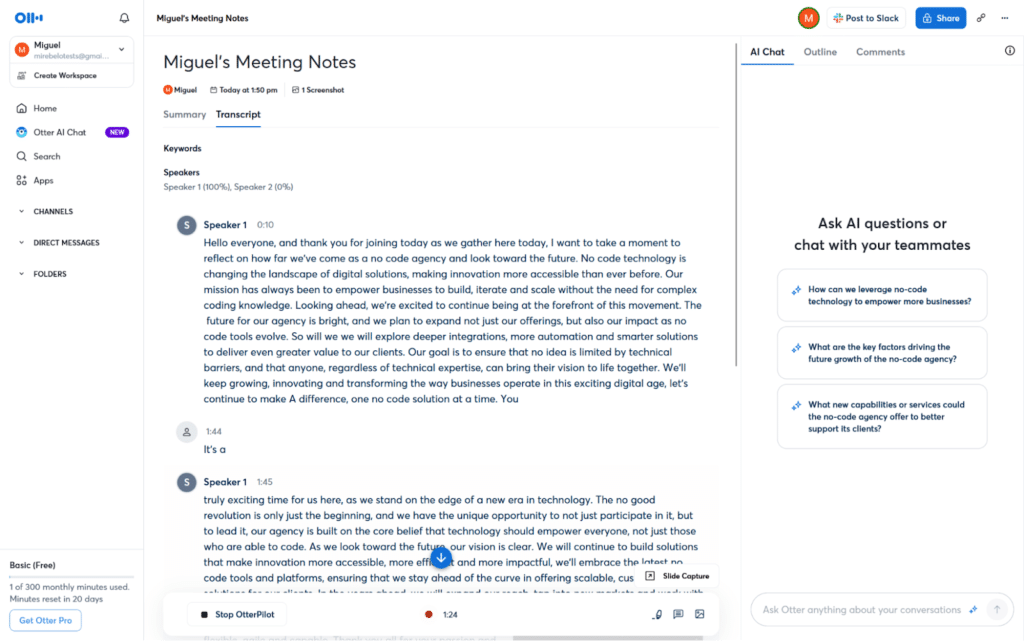
Furthermore, AI in general can help prep meetings in other ways:
- With AI summaries, you can put together more comprehensive QBRs and EBRs.
- Customer portals can be filled in with the help of your customer CS GPT, allowing for better, more purposeful interactions.
- Also, with your AI assistant, you can brainstorm more effective methods of leading your meetings and delivering value to your customers.
9. Proactive Support, Sentiment Analysis, and Churn Prevention
A key CS tactic is proactive engagement – talking to customers before their problems become reasons for churn, sometimes before they even know they have a problem. Naturally, AI can enhance that process too.
One of the most intriguing ways to do that is through sentiment analysis aided by AI. I have already highlighted an example in our article on AI retention tactics, but essentially, it implies:
- Feeding the data (such as a call transcript or a customer email) into a sentiment analysis tool such as Qualaroo, Yogi, or Symbl AI.
- Receive insights from the emotion analysis model.
- Review the information manually for any nuggets of information that can be useful.
- Upload sentiment analysis into a different tool, such as Snoflwake or one of the experience analysis tools presented at point 1 on this list.
At the end of the process, you should have plenty of new and interesting datapoints to work with for:
- Improving product experience
- Launching a voice-of-the-customer program
- Conducting market research
- Enhancing proactive engagement
- Conducting a border sentiment analysis of your brand
10. Free Your Workflow from Repetitive, Time-Consuming Tasks
All of the tactics highlighted above can be used to free up workflows. Not only are LLMs powerful tools for strategy, research, and customer engagement, but the entire breadth of AI tools available to CSMs allows us to remove busywork from our day-to-day tasks and improve our focus on customers.
Advances in agentic AI could go even further in that direction. AI agents are already good enough to automate many parts of a CSM’s workflow, from customer health scores to customer support assistance, upsell tactics, customer monitoring, and more.
What you choose to automate will come down to personal preference and your overall CS strategy. CSMs using AI agents should aim to improve efficiency in delivering customer outcomes while making sure their time isn’t spent correcting work done by AI.
AI in Customer Success – Things to Consider
Humans vs AI? No. Humans + AI
According to a recent CX Annual Insights report, 88% of customers are satisfied with human-led AI service interactions, while just 60% are satisfied with AI-only interactions.
The conclusion is clear: despite the trend of AI replacing support workers, humans are not just necessary but essential for customer satisfaction. AI can unlock never-before-seen efficiencies, but it’s still humans’ job to dictate the strategy, engagement tactics, and fine-tune their AI tools to improve their work quality and speed.
The highest-ROI AI setups keep humans in the loop. Let AI triage signals, surface patterns, and draft; let CSMs decide, coach, and build trust. Replace conversations with automation and churn goes up.
– Philipp Wolf, CEO, Custify
How to Track AI Implementation in CS: Metrics and Measurement
If you’re implementing AI, you’ll need to actually track how it’s doing. To that end, here are a few metrics to look out for:
- Improved eNPS. Keeping in line with my previous post, AI should make your CSMs feel better about their jobs and performance. A great way to track the impact of AI on employee workloads and morale is by measuring your employee net promoter score. If it’s going down, you might have an issue with AI adoption.
- Lower customer churn rate. Adding AI into your CS workflows should help lower your churn. If its impact is negligible or non-existent, you might want to review your AI adoption.
- Faster time-to-value. By adopting AI solutions, you should be able to determine what customers want faster and deliver those outcomes with increased reliability and speed, lowering their time-to-value.
- More streamlined CSM ratio. Through productivity enhancements, AI tools should make your CSMs feel less pressure from their many accounts. That means more time for complex interactions and less time spent on busywork.
- Improved customer health scores. Customers overall should feel the positive impact of your AI solutions. If done right, you should see an overall increase in their health scores.
Ethics and Privacy when Using AI in Customer Success
AI is not the ultimate holder of truth. In fact, many AI models can hallucinate or have inherent biases.
To that end, make sure to double-check all the specific information you receive – check the sources, verify that they’re reliable, and make sure the information is factual and not distorted to better serve your prompt. While some tools have built-in checks to ensure accuracy, not all of them do. As such, it’s a good idea overall to be vigilant with AI answers.
Lastly, don’t forget to consider your users’ privacy when talking to AI engines. You can either remove proprietary information and customer data before talking to the LLM, or ensure none of it is recorded by the tool (less reliable).
Will AI Revolutionize Customer Success?
In our opinion, AI is already changing the world of customer success. Whether it will be a revolution or just another paradigm shift is difficult to say at this moment. What is clear is that we need to stay up to date with current developments and, as CSMs, always make sure we’re using the tools at our disposal.
CustifyAI Opens the Door to Enhanced CS Workflows
At Custify, we’ve been hard at work on building AI customer success features that are actually helpful and complement CSM work instead of replacing it with cookie-cutter LLM responses that don’t fit the bill.
Interested in how Custify can drive up your CS team’s efficiency and boost your revenue with the help of AI? Schedule a demo with the Custify team, and we’ll walk you through everything we’ve been cooking up!
